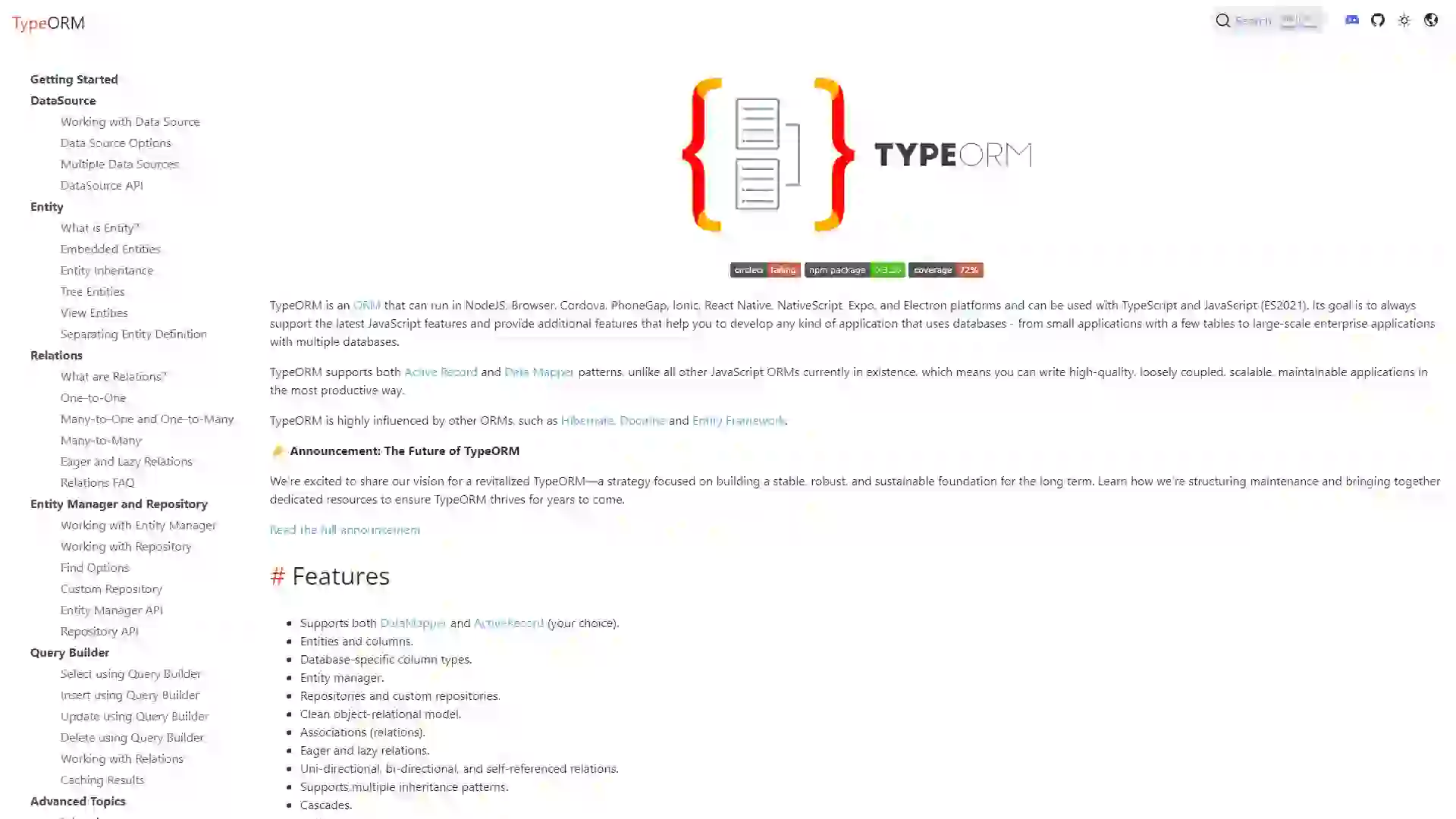- Home
- Development
- TypeORM
TypeORM
📝 Summary
TypeORM is a robust Object-Relational Mapping (ORM) framework designed to streamline database interactions for developers using TypeScript and JavaScript. It offers seamless compatibility with a wide range of databases and platforms, empowering developers to manage database operations with unparalleled efficiency and flexibility.
✨ Features
-
Multi-Database Compatibility
TypeORM supports a diverse array of databases, including MySQL, PostgreSQL, SQLite, and more. This versatility ensures that it can meet the unique requirements of various projects, regardless of the underlying database technology. -
Seamless TypeScript Integration
Deeply integrated with TypeScript, TypeORM provides type safety and intelligent code hints. This feature significantly enhances development efficiency by reducing errors and improving overall code quality. -
Flexible Query Builder
With its chainable API and native SQL support, TypeORM allows developers to construct complex queries effortlessly. This flexibility ensures that even the most intricate data retrieval and manipulation tasks can be handled with ease. -
Advanced Entity Relationship Management
TypeORM simplifies database design by supporting one-to-one, one-to-many, and many-to-many relationship mappings. This capability enables developers to model complex data structures with clarity and precision.
🎯 Use Cases
-
Full-Stack Application Development
TypeORM is ideal for full-stack applications that require clear separation between the front-end and back-end, particularly those leveraging TypeScript. It provides a cohesive development experience, ensuring smooth data flow and efficient database management. -
Multi-Database Projects
For projects that involve switching between or utilizing multiple databases simultaneously, TypeORM offers a unified interface that simplifies database interactions and reduces complexity. -
Complex Query Requirements
Applications that frequently require complex queries and data analysis benefit significantly from TypeORM's powerful query builder. It enables developers to optimize performance and extract valuable insights from their data.
⚠️ Drawbacks
-
Learning Curve
While TypeORM is a powerful tool, its configuration and advanced features may present a challenge for beginners. However, with dedication and practice, developers can quickly become proficient in leveraging its capabilities. -
Performance Considerations
In some scenarios, the abstraction layer of an ORM may introduce additional performance overhead. However, TypeORM's flexibility allows developers to optimize performance through fine-tuning and selective use of native SQL when necessary.
❓ FAQ
Q1: What are the main benefits of using TypeORM?
A1: TypeORM offers several key benefits, including seamless TypeScript integration, support for multiple databases, a flexible query builder, and advanced entity relationship management. These features collectively enhance development efficiency, reduce errors, and simplify database interactions.
Q2: How does TypeORM compare to other ORM tools?
A2: TypeORM stands out due to its deep TypeScript integration and extensive database compatibility. Unlike some alternatives, it provides a balance between ease of use and powerful functionality, making it suitable for both simple and complex projects.
Q3: Is TypeORM suitable for beginners?
A3: While TypeORM is powerful and versatile, it does have a learning curve. Beginners may find it challenging initially, but its extensive documentation and community support make it accessible. For those willing to invest time in learning, TypeORM can become an invaluable tool in their development toolkit.
